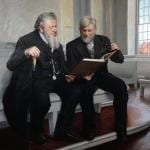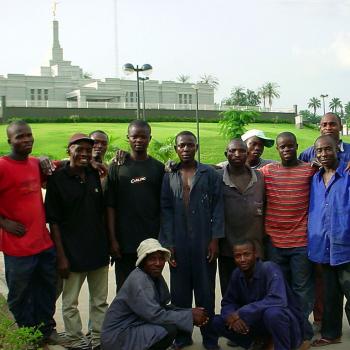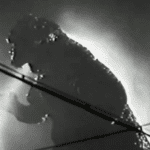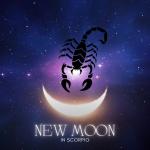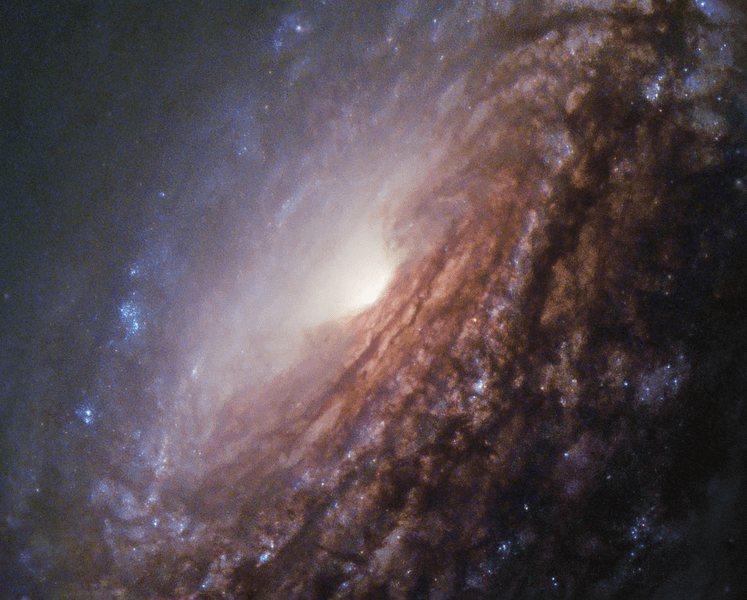
“I will sing with the spirit, and I will sing with the understanding also.” (1 Corinthians 14:15)
I would like to share a random potpourri of passages that struck me (and that I marked) during my reading of Michael Guillen, Believing is Seeing: A Physicist Explains How Science Shattered His Atheism and Revealed the Necessity of Faith (Carol Stream, IL: Tyndale Refresh, 2021). Dr. Guillen, who grew up in East Los Angeles (not too terribly far from where I myself was raised, although he’s a few years younger) before studying mathematics, physics, and astronomy at UCLA and Cornell, taught physics for eight years at Harvard University before becoming the chief science editor for ABC News:
The New Testament recounts the experience of a skeptical disciple named Thomas. When the other disciples told him that the recently crucified Jesus had returned to life, Thomas wasn’t buying it. “Unless I see the nail marks in his hands and put my finger where the nails were, and put my hand into his side, I will not believe.”
Thomas’s motto in life is a common one today: Seeing is believing. He would have made a good candidate for governor of Missouri, the “Show-Me” State.
But then Jesus appeared to Thomas and gave him a faith-building invitation: “Put your finger here, and look at my hands. Put your hand into the wound in my side. Don’t be faithless any longer. Believe!”
Thomas obeyed and was quickly convinced of the reality of Jesus’ resurrection. “My Lord and my God!” he cried out.
Jesus’s reply is quite telling: “You believe because you have seen me. Blessed are those who believe without seeing me.”
According to Christianity, there are truths — like Jesus’ existence — that cannot be proved. They must be believed to be seen.
The skeptical Thomas believed enough in the possibility that the crucified Jesus was alive that he reached out and touched the wounds. He believed enough in something that sounded outrageous to determine the truth of the matter for himself. If he hadn’t — if he’d simply walked away in a dismissive huff –he would have forever remained in the dark.
The same goes for you. Unless you’re willing to believe that something might be true, you’ll never bother to investigate and see for yourself whether it is true (or not). You’ll remain in a state of confident ignorance. (38-39)
Humans have an impressive genome — but, again, so do other plants and animals. In fact, the largest known strand of DNA belongs to Paris japonica, a white, star-like flower native to Japan. Its DNA is fifty times larger than ours.
And the African marbled lungfish, Protropterus aethiopicus, has the animal world’s largest genome. It’s more than forty times bigger than ours. (43)
According to paleoanthropologists and other scientists, we Homo sapiens sapiens — anatomically and behaviorally modern humans — appeared on Earth suddenly, not gradually. Prehistoric fossil and genetic records are ambiguous, but they indicate we happened onto the scene less than 100,000 years ago — like yesterday, given that science estimates Earth to be more than four billion years old.
What’s more, we humans burst onto the stage bundled with a cluster of behaviors never before seen on Earth. Sarah Wurz, an archaeologist at the Institute for Human Evolution, University of the Witwatersrand, Johannesburg, South Africa, explains that these unique behaviors include “art, religious beliefs, and complex technologies,” as well as “the ability to communicate habitually and effortlessly in symbols . . . [and] advanced problem solving and long range planning abilities.”
UCLA’s Pulitzer Prize-winning evolutionary biologist Jared Diamond calls our abrupt and unique appearance on Earth the great leap forward. “Insofar as there was any single moment when we could be said to have become human,” he says, “it was at the time of this Great Leap Forward 35,000 years ago.”
“What happened at that single moment in evolution? What made it possible, and why was it so sudden?” he asks. “This is a puzzle whose solution is still unknown.” (43-44)
Dr. Guillen uses the initials SQ to denote what he calls “spiritual intelligence,” which he believes to be uniquely human and an important part of what makes us human. He sees it manifest in “our religious art, literature, and music; our belief in supernatural deities and an afterlife; our habit of burying our dead with great ceremony; and our powerful religious passions, which routinely erupt in ways both heavenly and hellish” (45).
According to a major survey by Reuters/Ipsos, 82 percent of the world’s population believes that God (or gods) or some other Supreme Being (or beings) definitely or possibly exists. Only 18 percent say that such metaphysical beings do not exist.
That’s clear-cut evidence of our SQ, of our species’ uniqueness. It’s clear-cut evidence of our spiritual awareness.
Atheists routinely ridicule spiritual awareness; but as you can see, they are in the minority. They are, I submit, in denial. (60)
Quantum mechanics, special relativity, general relativity — the theoretical pillars of modern physics — verge on the supernatural. Their ideas about quarks, gluons, the quantum vacuum, virtual particles, quantum entanglement, dark matter, dark energy, curved spacetime, multiverses, ten-dimensional strings, gravity waves, black holes, white holes, wormholes — and on and on — are no less otherworldly than any religion’s God, gods, Supreme Being, or beings. (61)
Dr. Guillen cites the vocal atheist writer and neuroscientist Sam Harris:
I don’t know if our universe is, as J. B. S. Haldane said, “not only stranger than we suppose, but stranger than we can suppose.” But I am sure that it is stranger than we, as “atheists,” tend to represent while advocating atheism. As “atheists” we give others, and even ourselves, the sense that we are well on our way toward purging the universe of mystery. . . . Indeed, there are good reasons to believe that mystery is ineradicable from our circumstance, because however much we know, it seems like there will always be brute facts that we cannot account for. (cited on page 62)
And, as a bonus, here’s an item from the Christopher Hitchens Memorial “How Religion Poisons Everything” File™ that seems to have strayed into Dr. Guillen’s book:
I explained that the published research shows a high-SQ lifestyle is associated with lower risks of hypertension, heart disease, cancer, stroke, depression, suicide, drug abuse, and criminal delinquency. I wrote:
The largest study to date tracked the lives and deaths of 21,204 adults for a full decade. The average results? A person who attended church at least once a week lived several years longer than someone who didn’t attend at all. Among African-Americans, the disparity was even more stunning: fourteen years!
Today, similar results continue pouring in, so there’s no doubt a high-SQ lifestyle is extremely good for your health — as good or better than a nutritious diet and regular physical exercise. (58)


